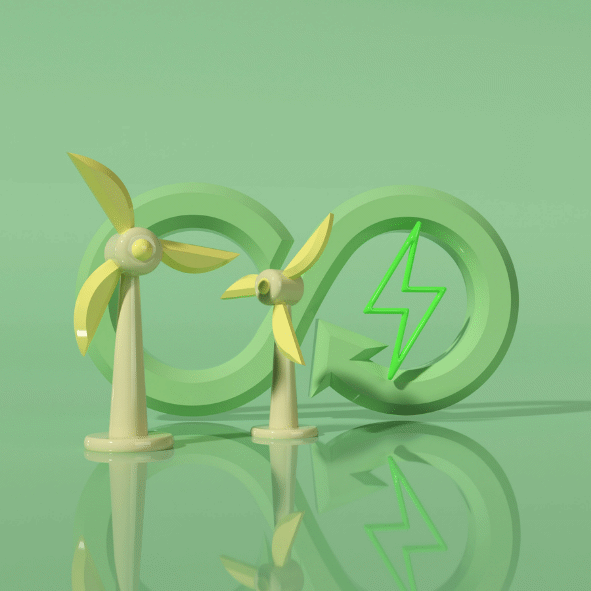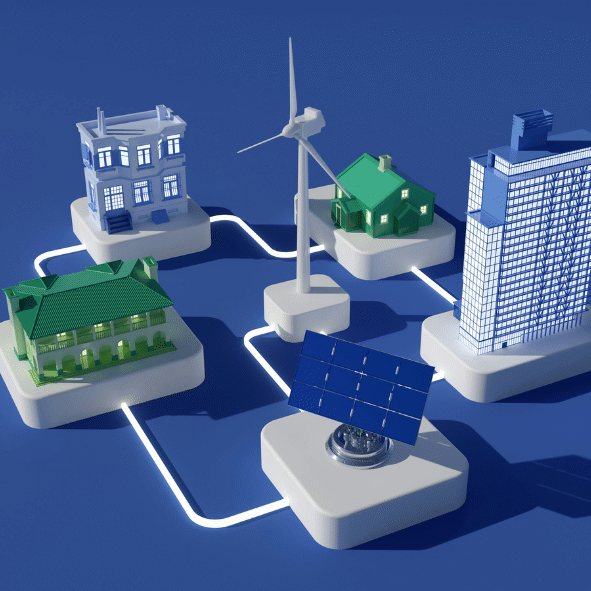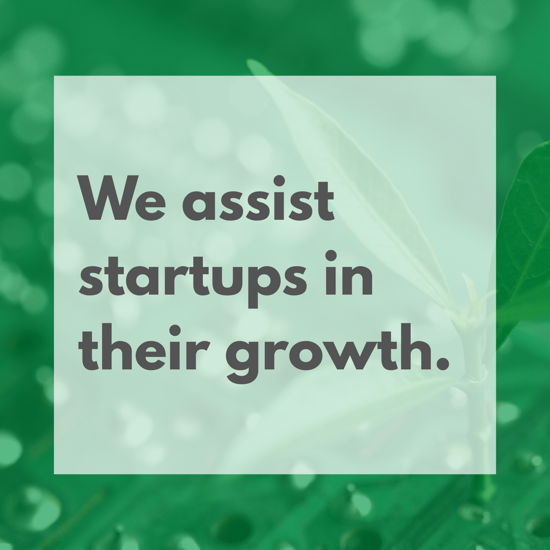

In Focus: Sustainability
Romania is emerging as a hub for Green Tech and Clean Tech, with the North-West region playing a crucial role in the transition towards sustainability. With a favorable mix of natural resources, European support, and local initiatives, this area is attracting increasing investments in renewable energy, energy efficiency, and the circular economy. Cluj-Napoca, the heart of innovation in the North-West, hosts startups and research centers focused on sustainable solutions, ranging from smart photovoltaic panels to technologies for reducing industrial emissions. Bihor and Satu Mare are becoming strategic points for the development of wind and solar energy, thanks to favorable climate conditions. Meanwhile, factories in Maramureș and Sălaj are adopting greener processes, investing in waste reduction and optimizing resource consumption. Access to European funds and collaborations between universities and the private sector create an ecosystem conducive to the development of Clean Tech. With supportive policies and an active community of innovators, North-West Romania has the potential to become a model of sustainability for the entire country.
Solar Photovoltaic Energy – The region benefits from medium-to-high solar potential, with solar farms becoming increasingly common across the area.
Wind Energy – Investments focus on small to medium-capacity turbines, especially in the hilly Apuseni Mountains area, which offers suitable conditions.
Small Hydro Energy – Efforts are underway to modernize mountain river micro-hydropower plants, aiming to enhance local energy security.
Biomass and Biogas – Agricultural and forestry waste is being used for heat and biogas production in cogeneration plants, supported by the EU's green strategy.
Green Hydrogen – Pilot projects are being developed in partnership with universities (Babeș-Bolyai, UTCN) to produce hydrogen from renewable energy sources.
Smart Grids and Energy Storage – Large-scale investments in smart grids and battery storage systems (under the Green Deal) are helping to manage renewable energy variability.
E-Mobility – Expansion of EV charging networks and electric public transport is underway. The RIS3 NV strategy highlights e-mobility as a key solution for smart cities.
Energy-Efficient Buildings and Industry – Advanced thermal insulation, smart HVAC systems, and automated energy management technologies are being adopted.
Waste Management and Recycling – Investments target complex sorting and recycling centers (plastics, wood, pesticides), supporting the transition to a circular economy.
Water Treatment and Environmental Quality – Modern water purification and reuse systems for industry, aligned with EU environmental directives, are being implemented.
Organic Agriculture and Bioeconomy – Green technologies in farming and biomass processing for sustainable materials support the EU’s “Farm to Fork” strategy.
Green Transport and Low-Carbon Logistics – Deployment of electric commercial fleets and green logistics practices (route optimization, hybrid vehicles) is growing rapidly.

Innovation and entrepreneurship
The Green & Clean Tech sector is increasingly attracting entrepreneurs and innovators developing real-world solutions—reducing resource consumption, improving energy efficiency, and cutting pollution. Cluj and Oradea have become hubs for startups creating air quality monitoring apps, smart farming systems, and digital tools for the circular economy. At the same time, large regional industries—construction materials, automotive, agro-food—are making strides toward decarbonization and waste reduction. Between 2018 and 2023, the number of green-focused initiatives steadily grew, with EU funding and acceleration programs providing a strong foundation for scaling. Clean Tech is no longer a niche—it’s a strategic growth path.

Companies
In 2023, over 1,200 companies were active in the North-West region in areas directly or indirectly related to Green & Clean Tech—from solar panel manufacturers and recycling firms to energy efficiency providers and ESG consultants. The sector is expanding rapidly, with a growing share in the local economy. While many players are micro-enterprises and startups, we’re also seeing the rise of key industrial actors in recycling, battery technology, green automation, and sustainable logistics. At the same time, investments in solar parks, wind farms, and cogeneration plants are fueling a new wave of green infrastructure firms and related services. The sector is dynamic yet still fragmented—fostering collaboration networks is vital for scaling up.

Workforce
The growth of the Clean Tech sector in the region is driving an accelerated demand for specialists—ranging from energy engineers and photovoltaic technicians to experts in sustainability, environmental management, and climate policy. In 2023, over 15,000 people were employed in green sectors in the North-West, and the demand for green skills is expected to increase significantly in the coming years. Universities in Cluj, Oradea, Baia Mare, and Satu Mare already train engineers in relevant fields (energy, environment, automation), but the green transition requires new hybrid competencies: technological know-how, project management, understanding of green legislation, and insight into international trends. The ecosystem needs flexible mechanisms for training and professional reconversion to keep pace with innovation.

Average Wage
In the Clean Tech field, salaries vary significantly depending on specialization and sector. In 2023, the average net monthly salary in companies focused on technology and sustainability was estimated at 5,100 RON, with higher values in green IT and energy engineering. Overall, salaries tend to exceed the regional average, and high demand for certain roles—such as photovoltaic engineers, sustainability managers, and ESG analysts—has led to increased competition for qualified specialists. In medium-sized cities, companies often offer more attractive salary packages to attract skilled professionals, especially for renewable technology implementation or industrial modernization projects. Public sector salaries (e.g., in green building initiatives or EU-funded projects) are also competitive due to available financing, although staff retention remains a challenge.

Education
Universities and technical colleges in the North-West region play a vital role in training professionals for sustainability and green energy sectors. The Technical University of Cluj-Napoca, the University of Oradea, and the University of Baia Mare offer dedicated programs in energy engineering, automation, environmental protection, and urban engineering. However, the number of graduates choosing to remain in the country is declining, driven by the lure of higher-paying green jobs in Western Europe. Strengthening partnerships between academia and local companies is essential to provide internships, mentorship, and concrete career opportunities within the region. Additionally, non-formal education—through reskilling and upskilling courses—is becoming increasingly important for the industrial workforce.

R&D
The North-West region of Romania hosts several research and innovation centers with strong expertise in green technologies, such as the Institute for Advanced Technologies in Cluj-Napoca and IRCEM – the Romanian Research Institute for Circular Economy and Environment. Additionally, regional universities are engaged in national and international projects focused on smart energy, energy storage, advanced recycling, and green materials. However, applied research remains underfunded and poorly connected to industry. INNO supports bridging this gap by facilitating partnerships and promoting technology transfer processes, encouraging collaboration between researchers, companies, and local authorities. The overarching goal is to accelerate the journey of innovations from the lab to the economy and everyday life.

Challenges
Lack of specialized workforce in green technologies. Limited access to funding for early-stage startups. Outdated energy infrastructure, not adapted for integrating renewables. Absence of efficient mechanisms for technology transfer and collaboration between research and industry. Fragmentation of circular economy initiatives at the local level. Lack of coherent local policies to stimulate green investments. Bureaucracy and slow approval processes for environmentally impactful projects.
 EU Green Deal
EU Green Deal
 The regulation on the Governance of the Energy Union
The regulation on the Governance of the Energy Union
 EU Climate Legislation
EU Climate Legislation
 The EU Emissions Trading System (ETS)
The EU Emissions Trading System (ETS)
 The Social Climate Plan
The Social Climate Plan
 The Long-Term Strategy for Greenhouse Gas Emission Reduction
The Long-Term Strategy for Greenhouse Gas Emission Reduction
 The National Integrated Energy and Climate Plan (PNIESC)
The National Integrated Energy and Climate Plan (PNIESC)
 The National Strategy for Circular Economy (SNEC)
The National Strategy for Circular Economy (SNEC)
Launched in 2019, the European Green Deal aims to achieve climate neutrality in the EU by 2050. This involves a significant reduction in greenhouse gas emissions across all economic sectors, as well as the elimination of remaining emissions through carbon capture methods, such as reforestation or carbon dioxide storage technologies. The net-zero emissions target became mandatory with the adoption of the European Climate Law in 2021, which also set an intermediate target for 2030—reducing greenhouse gas emissions by 55% compared to 1990 levels. In February 2024, the European Commission proposed that member states adopt a new target for 2040, aiming for a 90% reduction in emissions compared to 1990. In this regard, the new European Commission will introduce a legislative proposal that includes both this target and the necessary public policy framework for implementation. Thus, Romania’s climate policies continue to be largely influenced by European regulations in the field.
The Regulation on the EU Governance establishes the coordination of the Energy Union strategy, which is based on five main pillars: decarbonization, energy efficiency, energy security, the internal energy market, and research, innovation, and competitiveness. According to this regulation, Member States are required to develop integrated national energy and climate plans for the period 2021-2030, which will be updated every ten years thereafter. Furthermore, Member States must prepare and submit long-term strategies to the European Commission for emissions reduction, with a horizon of 30 years. These plans are subject to periodic assessments and must be monitored through biennial progress reports on their implementation. The regulation has made these plans essential tools for defining Romania's strategy to combat climate change.
EU Climate law legally enshrines the European Union's goal of achieving climate neutrality and sets an intermediate target of reducing net emissions by 55% by 2030, compared to 1990 levels. The regulation also provides for increasing carbon absorption capacity in sectors covered by LULUCF (Land Use, Land Use Change, and Forestry) and aims to achieve net-negative emissions after 2050. The law establishes a European Scientific Advisory Council on Climate Change, which provides evidence-based analyses and recommendations, and strengthens measures related to climate change adaptation. Although the mandatory targets are set at the European Union level, they influence the revision of relevant European legislation and have a direct impact on Romania's decarbonization process, as the country must contribute to achieving these common targets.
The EU Emissions Trading System (ETS) is a key tool for reducing greenhouse gas emissions in the European Union. It operates on a "cap and trade" principle, where a cap is set on the total amount of emissions allowed from specific sectors, such as power generation, heavy industry, and aviation. Companies within these sectors are allocated a certain number of emissions allowances, which they can buy or sell depending on their emission needs. The system incentivizes companies to reduce emissions by allowing them to sell unused allowances, thus creating a financial incentive for green investments. Over time, the cap is gradually lowered, reducing the overall emissions and promoting a shift towards cleaner technologies. The ETS is central to the EU's climate policies and supports its goals of achieving climate neutrality by 2050.
The Social Climate Plan is an initiative proposed by the European Commission to ensure that the transition towards a climate-neutral economy is fair and inclusive, particularly for vulnerable households, micro-enterprises, and transport users who are most affected by the green transition. The plan focuses on providing financial support to mitigate the social impact of rising energy prices, which are a consequence of the EU’s decarbonization policies, such as carbon pricing.
Key elements of the Social Climate Plan include:
-
Financial assistance for those most affected by higher energy costs, including low-income households.
-
Support for clean mobility, including promoting energy-efficient and low-carbon transport options for vulnerable groups.
-
Investments in energy efficiency measures, such as home insulation and heating systems, to reduce energy consumption and bills.
-
Strengthening social dialogue, ensuring that citizens, especially those facing energy poverty, are consulted in the design and implementation of climate policies.
The goal of the plan is to ensure that the green transition does not leave anyone behind, promoting social fairness while achieving environmental sustainability. It is closely linked to the broader EU climate goals, including the Green Deal and the Fit for 55 package.
The Long-Term Strategy for Greenhouse Gas Emission Reduction, established by the European Union, aims to outline a pathway for achieving net-zero emissions by 2050, in line with the EU's commitment under the Paris Agreement. The strategy is designed to provide a roadmap for transforming the economy, reducing emissions across all sectors, and transitioning to a climate-neutral economy.
This long-term strategy is a central component of the European Green Deal and aims to provide the framework for achieving Europe’s climate neutrality goal by 2050, while fostering innovation, competitiveness, and economic growth in a sustainable way.
Notably, the second draft version of the National Integrated Energy and Climate Plan (PNIESC), published by the Ministry of Energy in September 2024, sets a higher ambition for greenhouse gas emission reduction targets compared to the STL (2023). It aims for an 85% reduction in net greenhouse gas emissions by 2030, compared to 1990 levels. Additionally, the PNIESC outlines goals for a 96% reduction by 2040 and a 105% reduction by 2050, relative to 1990 emissions.
The National Strategy for Circular Economy (SNEC) is the framework document adopted by the Romanian Government through Decision No. 1.172/2022, which sets the direction for the transition from a linear to a circular economic model, in line with the European Union’s Circular Economy Action Plan. It aims to reduce the consumption of natural resources and waste generation, promoting efficient resource use and recycling. The strategy identifies seven priority sectors: agriculture and forestry, the automotive industry, construction, food and beverages, packaging, textiles, and electrical and electronic equipment. Complementing the SNEC, the National Circular Economy Plan was adopted through Government Decision No. 927/2023, detailing specific actions for each sector, as well as funding mechanisms and interinstitutional coordination. The implementation of these measures aims to enhance economic competitiveness, protect the environment, and improve citizens' quality of life.


